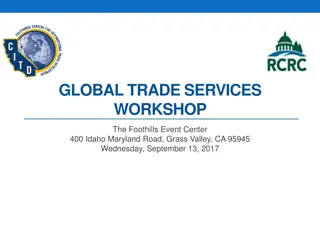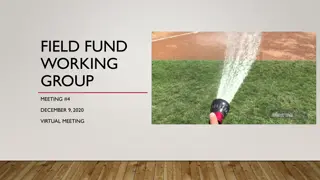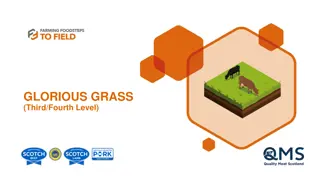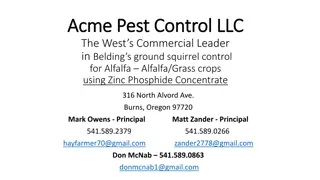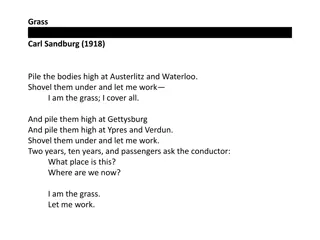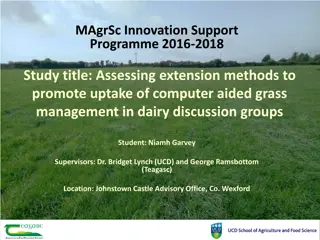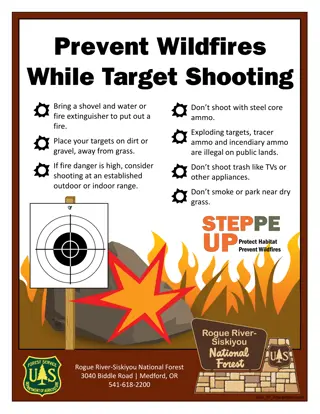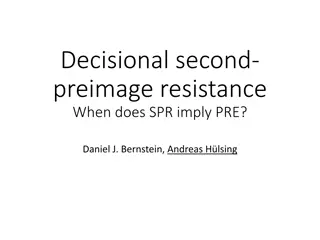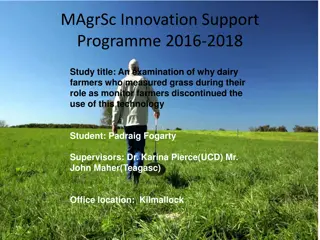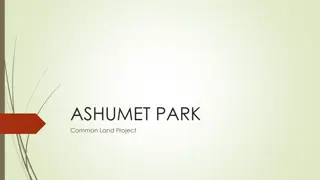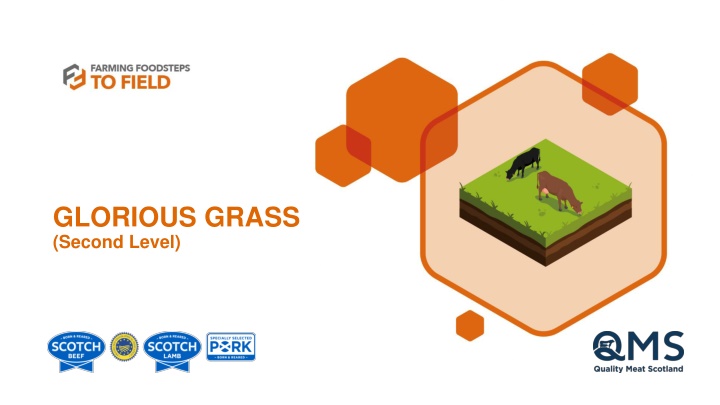
Discovering the Wonders of Grass in Scotland
Join us on a journey to explore the various facets of grass in Scotland. From its importance and growth to its role in agriculture and animal nutrition, this presentation covers it all. Learn about different types of grass, how it is harvested and measured, and the factors that affect its growth. Engage in a class discussion on the uses of grass in Scotland and its suitability for cultivation in the country's climate. Delve into the world of cattle and sheep farming, where grass is a primary feed source, and understand why Scotland's landscape is conducive to grassland. Get ready to appreciate the significance of this humble plant in Scotland's ecosystem.
Download Presentation

Please find below an Image/Link to download the presentation.
The content on the website is provided AS IS for your information and personal use only. It may not be sold, licensed, or shared on other websites without obtaining consent from the author. If you encounter any issues during the download, it is possible that the publisher has removed the file from their server.
You are allowed to download the files provided on this website for personal or commercial use, subject to the condition that they are used lawfully. All files are the property of their respective owners.
The content on the website is provided AS IS for your information and personal use only. It may not be sold, licensed, or shared on other websites without obtaining consent from the author.
E N D
Presentation Transcript
GLORIOUS GRASS (Second Level)
Session Layout This presentation will cover the following: An introduction to grass The importance of Grass for Scotland How Grass Grows Harvesting Grass Grass Measuring Why & How? Grass Measuring Experiment Key Points & Glossary
Class Discussion How many different types of grass do you think there are? What do we use grass for in Scotland? Which animals eat grass? Which sports use grass courts/pitches? Do you think Scotland is a good country for growing grass?
Introduction to Grass There are lots of different types of grass; it is estimated that there are over ten thousand different species worldwide. Grass is used for recreation (golf, football, rugby etc), amenity (parks, playgrounds and green spaces), domestic (lawns) and in agriculture.
Cattle & Sheep Lots of other animals eat grass but this presentation focuses on cattle and sheep. Some other grass-eating animals horses, goats, hens, geese, ducks, rabbits, guinea pigs. Cattle & Sheep are ruminants (they have four compartments to their stomach) and can eat grass and convert it into energy which can be converted into meat. For many cattle and sheep farmers in Scotland, grass is their most important crop as it is the main feed for their animals.
Growing Grass in Scotland - Climate For grass to grow it needs frequent rain, sunlight and temperatures that aren t too hot. Do you think that sounds like Scotland s climate?
Factors Affecting Grass Growth Factors Affecting Grass Growth: Grass growth begins when the soil temperature is at 5 C so grass doesn t grow much in the winter months. Temperature: Light is essential for providing energy to make the grass grow. Light: Grass needs a regular water supply to grow. Water: Nitrogen is an element that helps grass grow. Grass plants can find nitrogen from the soil and sometimes farmers will add nitrogen fertiliser (artificial) or natural fertiliser such as dung (the straw, poo and pee which is mucked out of the shed) which contains nitrogen. Nitrogen:
Growing Grass in Scotland - Landscape Over 80% of Scotland is grassland often it is ground that isn t suitable for growing crops, fruits or vegetables but ideal for growing grass. DISCUSSION POINT: Why isn t ground on higher lands not suitable for growing crops, fruits or vegetables? Click for answers POSSIBLE ANSWERS: Shallower soil Difficult to access Too steep Machinery required not suitable for steep ground. Often higher lands have lower temperatures, higher winds and more extreme weather (shorter growing season)
How Grass Grows 1. The grass seed is sown. 2. The seedling germinates and the first leaf appears. 3. Each new leaf grows up encircled by the last one. 4. The oldest leaf is always on the outside and the young expanding leaf in the centre. 5. The seedling plant develops to produce new leaves (number varies depending on species). 6. Leaves continue to be produced but as each new leaf appears, the oldest one dies. 7. Grass plants have the ability to produce tillers (a shoot that grows after the initial parent shoot, possessing its own leaf). Tillering mainly happens in the Spring and Autumn. 8. Tillering continues until plants come into contact with each other, so all the gaps have been filled. Each tiller will live for about a year. If you search online for grass growing timelapse soil cross section you can watch the process taking place or try your own grass growing experiment.
Harvesting Grass Grass growing is rapid throughout the summer months but slows or stops over the winter so farmers harvest grass in the summer and make it into Silage or Hay to feed animals throughout the winter. Hay Hay is cut, then left to dry in the sun (usually for about a week) then baled and stored in a shed.
Harvesting Grass - Silage Silage is grass that has been pickled . The grass is cut, then left for a few hours/a day to dry out a bit. It is then, either taken to a large pit where it is pressed down (by driving over it in a tractor); or it is made into bales. Both of which are then covered in plastic. Covering it in plastic keeps the air out which allows the fermentation (pickling process) to take place which ensures it will remain tasty and nutritious for the cattle and sheep throughout the winter.
Why Farmers Measure Grass Many farmers measure grass so they can figure out how much grass they have on the farm. They will then work out how many animals they have to feed and how much feed they require. With that information they can then work out if they have enough grass to feed the animals and if so, for how long. If they don t have enough grass they can source different feeds or change the number of cattle/sheep they have. DISCUSSION POINTS: Did you know farmers measured their grass? How do you think they take the measurements?
How Farmers Measure Grass Farmers use several different tools to manage grass on farm: 1. 2. 3. 4. Sward stick similar to the ruler and board method on next slide. Rising plate meter includes electronic, manual and Bluetooth Dragged pasture meter goes behind a quad bike to measure grass Weather station can help measure ground temperature, rainfall & soil temperature. App/mobile phone Software/computer Scissors, bag & scales 5. 6. 7. 4. 3. 1. 5. 2.
Experiment: How to Measure Grass Measure the grass in the school playground, the playing fields, a garden or in the park. What you need: A ruler A flat board (a clipboard, stiff cardboard or a plastic lid something that will level the grass when laid on it but not push it down too much). Notebook & pen Method: 1. Select several different sample areas (if there are long patches of grass, don t measure all of the long patches, measure a fair representation of the area). 2. Lay the board flat (don t push it down) on the sample area. 3. Use the ruler to measure the height from the ground to the bottom side of the board. 4. Take a note of the height of the grass. 5. Repeat the process until you get a fair representation of the sample area/field. 6. Take a list of all your measurements. 7. Work out an average from all the measurements you ve recorded. 8. You can try this at different times of year or leave unmowed and measure weekly over the summer.
Key Points Ruminants (animals such as cattle and sheep that have four compartments to their stomach) are unique in that they can consume grass and convert it into energy which can be converted into human protein meat. Over 80% of Scotland is grassland often it is ground that isn t suitable for growing crops, fruits or vegetables but ideal for growing grass. Grass provides soil stability, prevents top soil depletion and reduces flooding. Factors that impact grass growth are water, light, nitrogen & temperature. Farmers also harvest grass and make it into Silage or Hay to feed animals through the winter.
Glossary of Terms Biodiversity Bulls Carbon Sequestration Dry Matter Dung The existence of a wide variety of plant and animal species living in their natural environment. Male cattle used for breeding. The process by which carbon is stored in the soil through plant intake, lifecycle and decomposition. Dry matter is the proportion of the grass which remains after all the water content is removed. Dung is faeces from animals, especially from large animals such as cattle often it is mixed with the bedding (i.e. straw) that has been used to house the animals. A female sheep that has had a lamb. Cattle that are being fattened (finished) for market/slaughter. Ewes that are getting some rich grass to ensure they are in prime condition for mating. To cause seeds to sprout or form new tissue following increased metabolism. Grazing or grazing land is land on which animals graze eat grass. Unit of area in the metric system equal to 10,000 square metres. The equivalent of 2.471 acres. Lactation is the production of milk by female mammals during the period after they give birth. Animals such as cattle, pigs and sheep which are kept on a farm are referred to as livestock. The energy (in this case from the grass) that can be used by the animal. Ewe Finishing Cattle Flushing Ewes Germinate Grazing Hectare Lactation Livestock Metabolisable Energy (ME) Paddocks A small field (often a larger field is sub-divided into smaller paddocks).
Glossary of Terms (cont.) Pasture Photosynthesis Pasture is land with grass growing on it for farm animals to eat. The synthesis of organic compounds from carbon dioxide and water (with the release of oxygen) using light energy absorbed. A male sheep used for breeding. Livestock that is purchased to replace animals which have died or been sold. The remaining, left over (the grazing residual is the grass that is left). A tool used to measure the quantity of pasture in a paddock. To use an RPM, you walk across a paddock taking plate meter readings. The shifting of livestock to different units of a pasture in regular sequence to permit the recovery and growth of the pasture plants after grazing. The first compartment of the stomach of ruminants, behind the reticulum, in which food is partly digested before being regurgitated as cud. Any mammal that chews the cud and has a stomach of four compartments, one of which is the rumen. The group includes deer, antelopes, cattle, sheep, and goats. Turf or grass the grasses, weeds, organic matter that make up the soil covering. A tool used to measure the length of a sward/grass. A shoot that grows after the initial parent shoot, possessing its own leaf. Ram/Tup Replacements Residual Rising Plate Meter Rotational Grazing Rumen Ruminant Sward Sward Stick Tiller * Definitions collated from Collins Dictionary and QMS own knowledge.
Next Steps To take this lesson further you may want to look at the Glorious Grass Activity (Level 3). You can explore more about red meat production and sustainability & the environment at the To Field section of Farming Foodsteps. There is a STEM for Sustainability activity which encourages pupils to explore solutions to reducing farming s carbon footprint.
Content prepared by the Health & Education Team at Quality Meat Scotland For further information contact: education@qmscotland.co.uk











